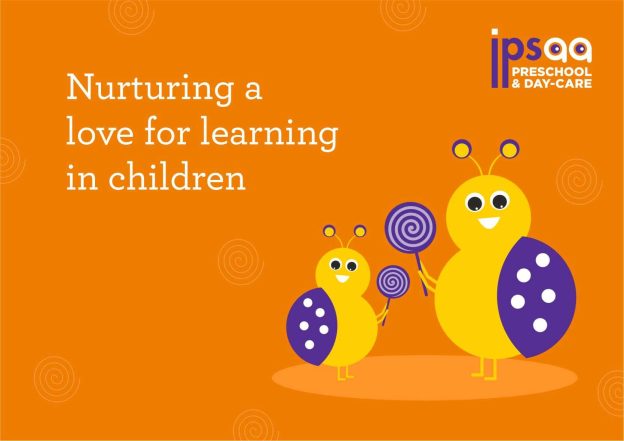Nurturing a child’s love for gaining knowledge begins with trust. As preschoolers, we agree with our children to recognize while they may be ready to examine what they may be interested in learning. We agree with them to recognize how to go about learning. Parents usually take this view of getting to know during the child’s first years while they are learning to stand, walk, talk, and carry out many important and tough matters, with a little assistance from someone. No one worries that a baby can be too lazy, uncooperative, or unmotivated to examine those matters; it’s far sincerely assumed that each baby is born wanting to examine the matters he wishes to recognize so that one can participate in the global world around him.
Every child loves the endless possibilities a cardboard box gives and is happy to speak for hours about dinosaurs or display a few magic tricks to their parents. These matters they love do matter. As their parents, our reaction can vary in many aspects furthering their curiosity or squashing it. Our response and their freedom to discover their interest can foster a love of learning or take it away. As babies, children have an innate curiosity. They’re keen to discover the world around them, absorbing new data and talents like sponges. But someplace along the way, this natural love of learning is regularly lost. Many children grow to dislike or even dread school and learning new things. Fortunately, the love of learning may be evolved and cultivated using some easy strategies. With these 7 famous parenting guides, you’ll know how to talk to your children to increase confidence, internal motivation, and a can-do attitude.
Offer Hands-on Experience
Research has shown that child interests are most effectively enhanced through hands-on learning. Students learn more productively when they touch, move, and experience. For instance, when students solve a mathematical word problem, they are likely to answer it correctly. Not only does hands-on learning help the child process the information efficiently, but it also makes it fun. The love of learning among children is crucial for their overall development. Many children do not simply enjoy reading textbooks or learning through rote memorization and copying notes. They tend to look for experiences and hands-on activities which will spark their imagination and interest. For this, teachers and parents should incorporate interaction, movement, and tactile experiences in the classroom and at home as much as possible. This is one of the simplest and most effective ways of using manipulatives.
Helping in Discovering Passion and Interests
The love of learning among children can be sparked by helping them discover their passion and area of interest. Studies reflect that learning is boosted when children can choose their area of interest (multiple) to pursue. This is one of the effective ways for teachers to build choice in the classroom. The key to unlocking a child’s potential is to find their interest and help them develop it at every stage.
Make Learning Fun and Engaging
Some subjects may seem dry to students, but even these can become interesting through academic games, songs, creative activities, or scavenger hunts. For example, if children are learning about the number thirteen, you can make the learning interesting by providing clues or asking them to guess the numbers before or after. Moreover, you can create crossword puzzles, BINGO, or word searches. For this, various websites greatly help, such as Kahoot. This platform offers gamified learning digitally.
Find out Child’s Learning Style
Children have unique and special learning styles that are better and more effective for them. Educators and psychologists have developed three main learning styles- auditory, visual, and kinesthetic. Also, various quizzes are available online, which can determine your child’s learning style; you can also guess your child’s interests and the type of games they enjoy. Visual learners quickly process the information when presented in images or picture format. On the other hand, auditory learners likely process information by hearing it. They are also known as good listeners. Lastly, kinesthetic learners prefer physical touch. They excel at sports or dance and learn best through touch or movement.
Demonstrate Your Passion
Reflecting on your passion and being a role model for your child can show them what you are passionate about and encourage them to find theirs too. If you have time and resources, take an online or in-person course in something interesting to you, such as photography, cooking, etc. And use that learning to teach your child about what you’re learning and the challenges and excitement you encounter. If you can’t take a class, watch videos or read books to learn more about the topic of interest.
Be Supportive and Encouraging
The crucial reason why children often tend to lose their interest and love of learning is that they begin to associate learning with pressure, stress, and anxiety. They get worried before learning about getting a bad grade, failing the test, or answering any question wrong. Learning is not about outcomes; rather, it should be more fun. It is about the process and effort your child is putting into his work. Further, it is important to teach your child that success is only sometimes the best result of acknowledging the abilities such as intelligence. Instead, success comes with consistency, practice, persistence, hard work, and many failures.
Conclusion
Giving your child room for experimentation and error and making learning an interactive conversation will go a long way in developing the love for learning in children. Play schools are a great choice if you’re a working parent and can’t find time for your child. ipsaa day care is an excellent choice to enhance, boost, and help your child develop a love for learning. We use modern and innovative ways to implement learning among children. With us, your child gets what he enjoys and finds their interest. For more insight, visit our website https://ipsaa.in/.


